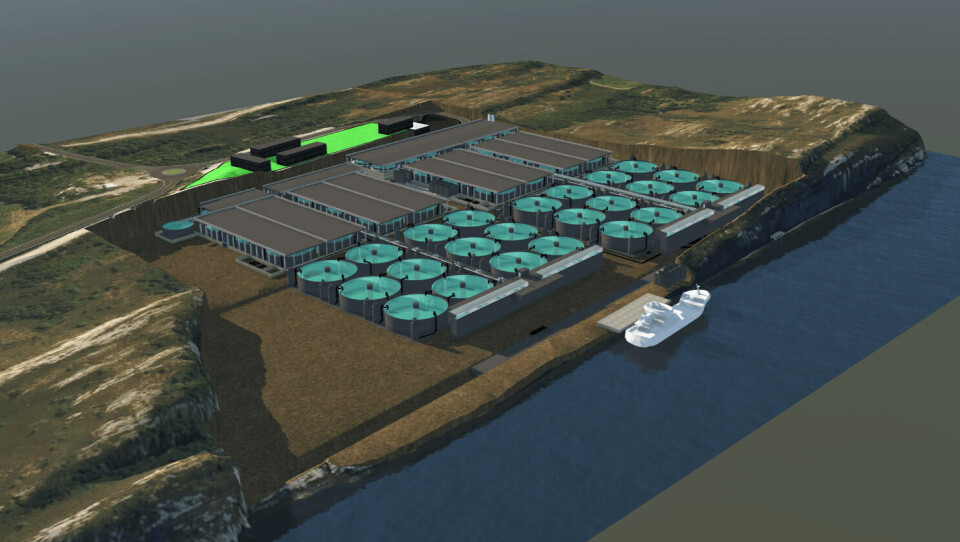
Kvarøy CEO appointed chair of on-land salmon company
Arctic Seafarm, which plans to produce up to 15,000 tonnes of salmon annually at an on-land farm in northern Norway, has appointed salmon farmer Alf-Gøran Knutsen as its board chairman.
Knutsen is chief executive of family owned Kvarøy Fiskeoppdrett AS, which is the largest stakeholder in the Arctic Seafarm project.
“We are happy to have Kvarøy Fiskeoppdrett AS on board with us,” said Arctic Seafarm chief executive Carsten Rimer in a press release.
“Their knowledge of fish welfare and sustainable aquaculture will be an important key to our success. I’m confident their experience and involvement in every step of the value chain from smolt deliveries through to distribution will allow this collaboration to prosper.”

80 metre deep water supply
This week the project also secured a government permit for its flow-through system that will utilise sea water drawn from 80 metres below the surface, a depth that minimises the need for pest control measures.
The water will be filtered for sediment and treated with an ultra-violet light before entering the flow-through system. Water temperatures will remain consistent throughout the year to facilitate optimal growing conditions.
The land-based salmon farm is currently being built within the Nesna Industrial Park, 30 minutes south of the island of Kvarøy where Kvarøy Fiskeoppdrett is based.
Renewable power
Arctic Seafarm will maintain a low climate footprint sourcing energy from solar, hydro technology, and biofuel. Further energy saving measures will be explored including the use of residual waste from salmon production.
“We believe the future of aquaculture will thrive with a co-existence of both sea farms and land-based facilities,” said Knutsen. “It’s our responsibility to find new, safe ways to feed the world’s growing population with sustainable seafood. This is the path forward to facilitate responsible production and the future of equitable access to nutritious seafood globally.”






















































